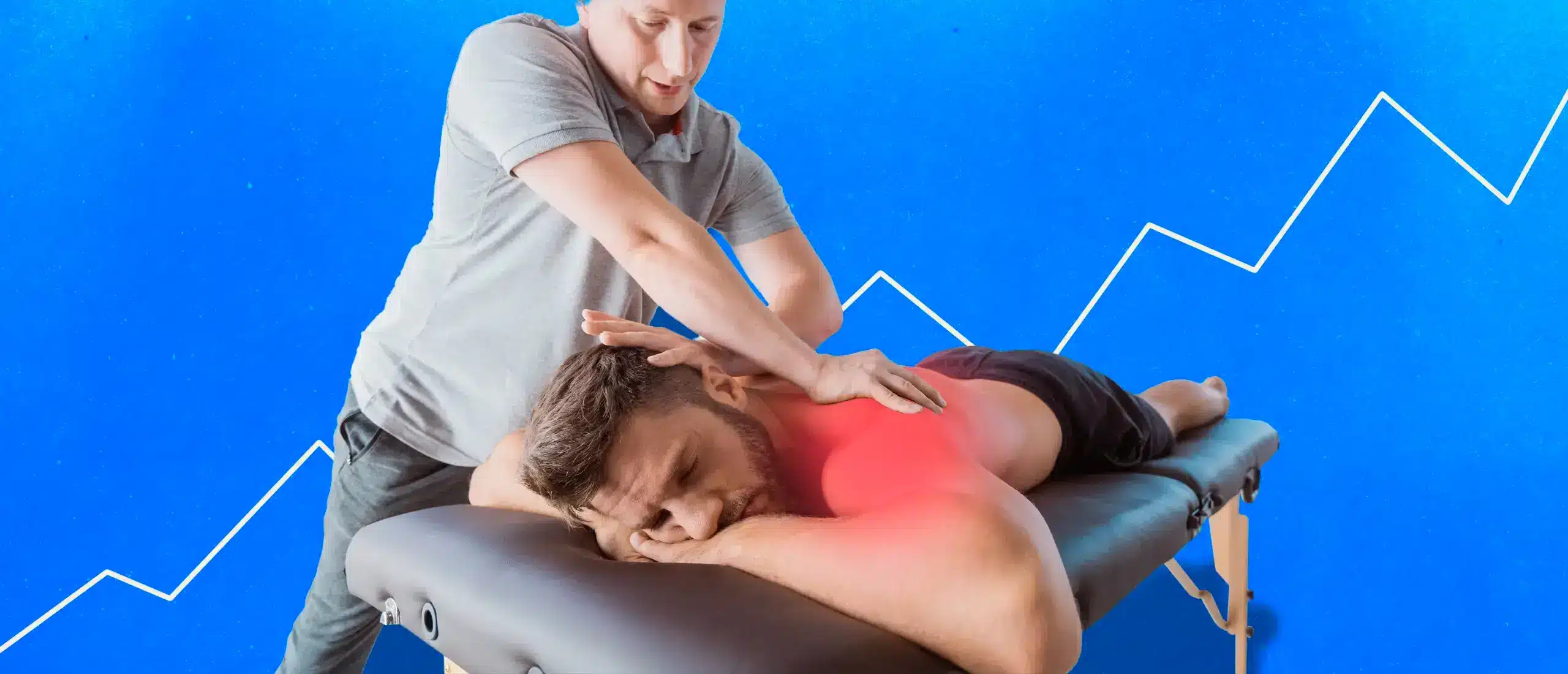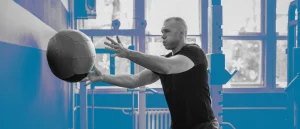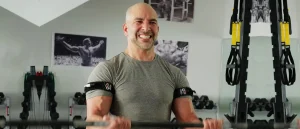Can Back Adjustments Help You Live Longer? A Chiropractor Explains
- By Sydney Bueckert, NASM C.P.T., C.E.S., F.N.S., G.P.T.S.
- November 27, 2023
We love the satisfying pop of a good chiropractic adjustment—and science confirms it (1). But we’ve also all had that dark moment on the table where we’ve wondered if the effects are real or just placebo. Only to come to the conclusion that so long as it delivers sweet relief from our aches and pains, we don’t really care.
Chiropractic sports physician and US Olympic Team doctor Chris Vincent, D.C. is here to put the record straight: Chiropractic care not only works, it can help you live longer. “If your body is functioning properly, it will last longer,” Vincent told Hone Health CEO Saad Alam in a recent episode of the Hone In podcast.
Here’s how your next visit to the chiropractor might boost your longevity.
How Going to the Chiropractor is Linked to Longevity
Maintains mobility
Your body responds to a tweak in your back or a kink in your neck by isolating it, reducing mobility, and sending inflammation to that area—which can manifest as pain.
Mobility, or your ability to functionally move through a normal range of motion, is essential for longevity. Studies have shown a lack of mobility is a predictor of all-cause mortality (2, 3). Without it, you lose your ability to do daily tasks like walking to the mailbox, standing up from a chair, or reaching for a cup in the cabinet. If you’re immobile, you’re also a lot more likely to live a sedentary lifestyle, which doubles down on your mortality risk (4).
“When you go to the chiropractor we can find those joints that are not moving and adjust them to induce motion back into that joint or put it back in place, so the joint continues to function,” says Vincent.
Want to maintain joint health to boost performance? Vincent reveals his go-to exercise routine on the Hone In podcast.
Keeps joints healthy
Think about your joints like the wheels on a car. If your wheels are out of alignment, they’re going to wear out faster because there’s more stress on the tread of the tires. “It’s the same with your joints. If all your joints are perfectly aligned and moving well, they’re not going to wear out as fast as an immobile joint,” says Vincent.
As you move your body, synovial fluid—which is rich in nutrients and oxygen—hydrates your joints. “If a joint is only moving one direction or not moving in all directions, that nutrition and oxygen is not getting to the whole joint, and the joint degenerates faster,” says Vincent. “A joint that is immobilized or dysfunctional degenerates faster than any other joint.”
Restores function
Tight muscles or tendons—the link between your muscles and joints–can pull joints out of alignment and contribute to pain. “We get tighter as we age,” Vincent explains. “Our fibrous connective tissue sort of dries out and turns into beef jerky. If we can keep that lengthened and keep it functional, you keep your mobility, you keep your function.”
Studies have also shown as you age, you can lose as much as three to eight percent of your muscle mass per decade (5)—slowing down your metabolism, and decreasing your strength and functional ability to complete daily tasks with ease.
For muscle and tendon upkeep, Vincent starts with testing overall strength. “You’ve got to make sure the muscles are balanced. I make sure there’s balance between front and back, left and right, and that everything is firing and stabilizing properly,” he says.
To even out muscle imbalances, and strengthen both muscles and tendons, Vincent prescribes specific strength training exercises based on a client’s needs. Studies show both heavy resistance training and eccentric training—slowing down the lowering phase of a movement—with lighter weight and slow and controlled reps can improve strength and tendon stiffness (6, 7, 8).
Boosts recovery
According to Vincent, recovery is essential for longevity. “We often don’t allow ourselves enough time to recover between workouts or we push ourselves too hard. And it may not be pushing yourself too hard in a specific activity or sport, but if you’re not getting enough regenerative sleep, or you’re too stressed at work and you’ve got too much cortisol in your system, then your body can’t recover,” he says.
When you fail to recover, your risk of injury skyrockets. “A big cause of aging is getting injured,” says Vincent. “It’s those little injuries over a longer period of time that cause you to age because you don’t quite get back to that same level of health and fitness as you did.” A hamstring pull when you’re 20 isn’t fun, but a hamstring pull when you’re 60, 70, 80 years old can be a major setback. “That’s when you see the biggest deterioration in small injuries,” Vincent adds.
To boost recovery Vincent focuses on a holistic approach, including strength training, foam rolling, cold and heat therapy, acupuncture, and posture tweaks to help his clients recover, stat. “It goes so much deeper than just going to the chiropractor to get adjusted,” says Vincent. “I’ll always look at what else is out there and what other modalities can we use, and sometimes it’s a combination of two or three things.”
References
1. Miller, P. et al. (2011). Qualitative Study on Chiropractic Patients’ Personal Perception of the Audible Release and Cavitation.
2. Bergland, A et al. (2017). Mobility as a Predictor of All-Cause Mortality in Older Men and Women: 11.8 Year Follow-up in the Tromso Study.
3. Keeler, E. et al. (2010). The Impact of Functional Status on Life Expectancy in Older Persons.
4. Carlson S. et al. (2018). Percentage of Deaths Associated With Inadequate Physical Activity in the United States.
5. Volpi, E. et al. (2010). Muscle Tissue Changes With Aging.
6. Lim, H. et al. (2018). Effects of Isometric, Eccentric or Heavy Slow Resistance Exercises on Pain and Function in Individuals With Patellar Tendinopathy: A Systematic Review.
7. Sato, S. et al. (2022). Comparison Between Concentric-Only, Eccentric-Only, and Concentric-Eccentric Resistance Training of the Elbow Flexors For Their Effects on Muscle Strength and Hypertrophy.
8. Quinlan, J et al. (2019). Tendon Adaptations to Eccentric Exercise and the Implications for Older Adults.















